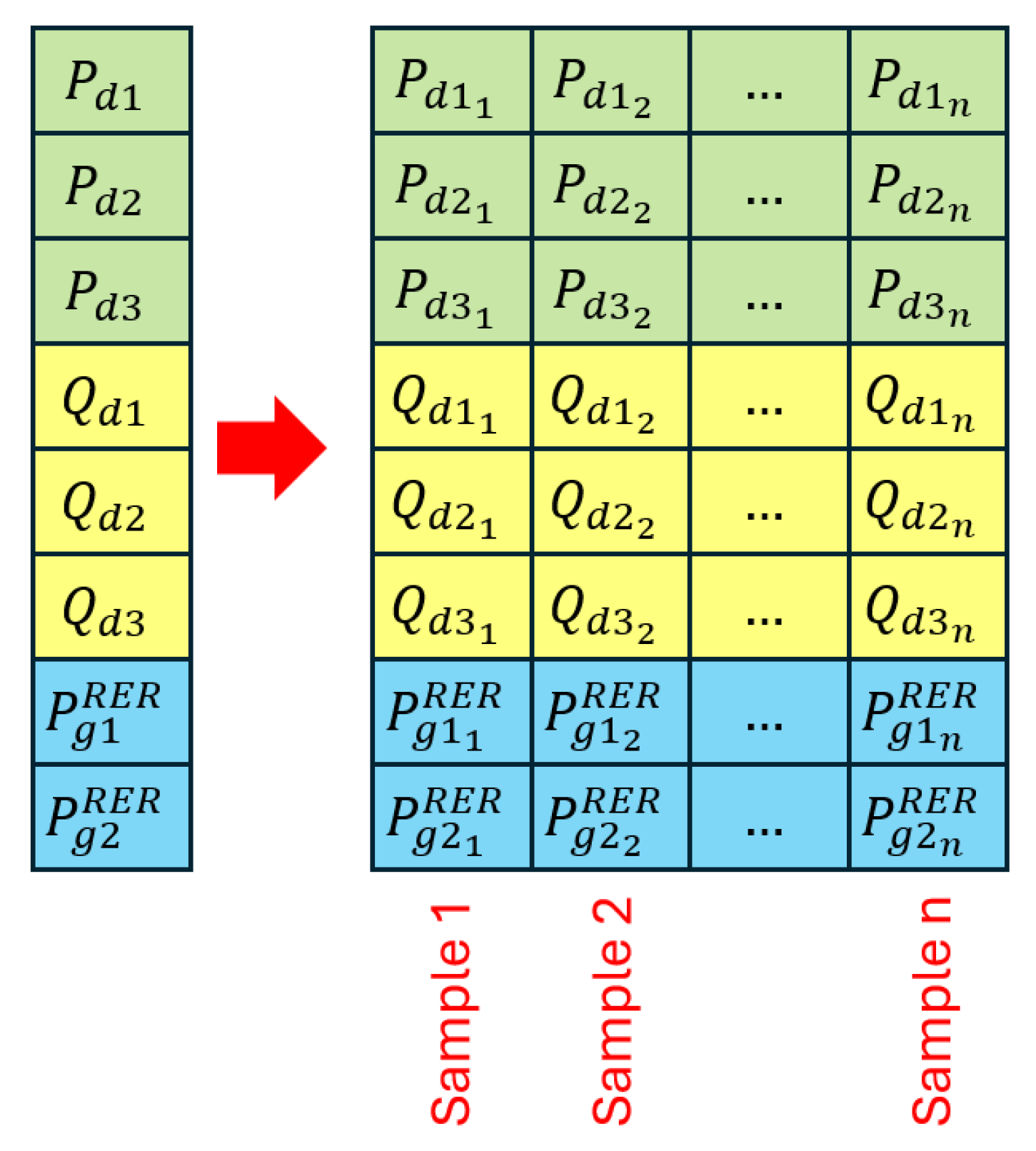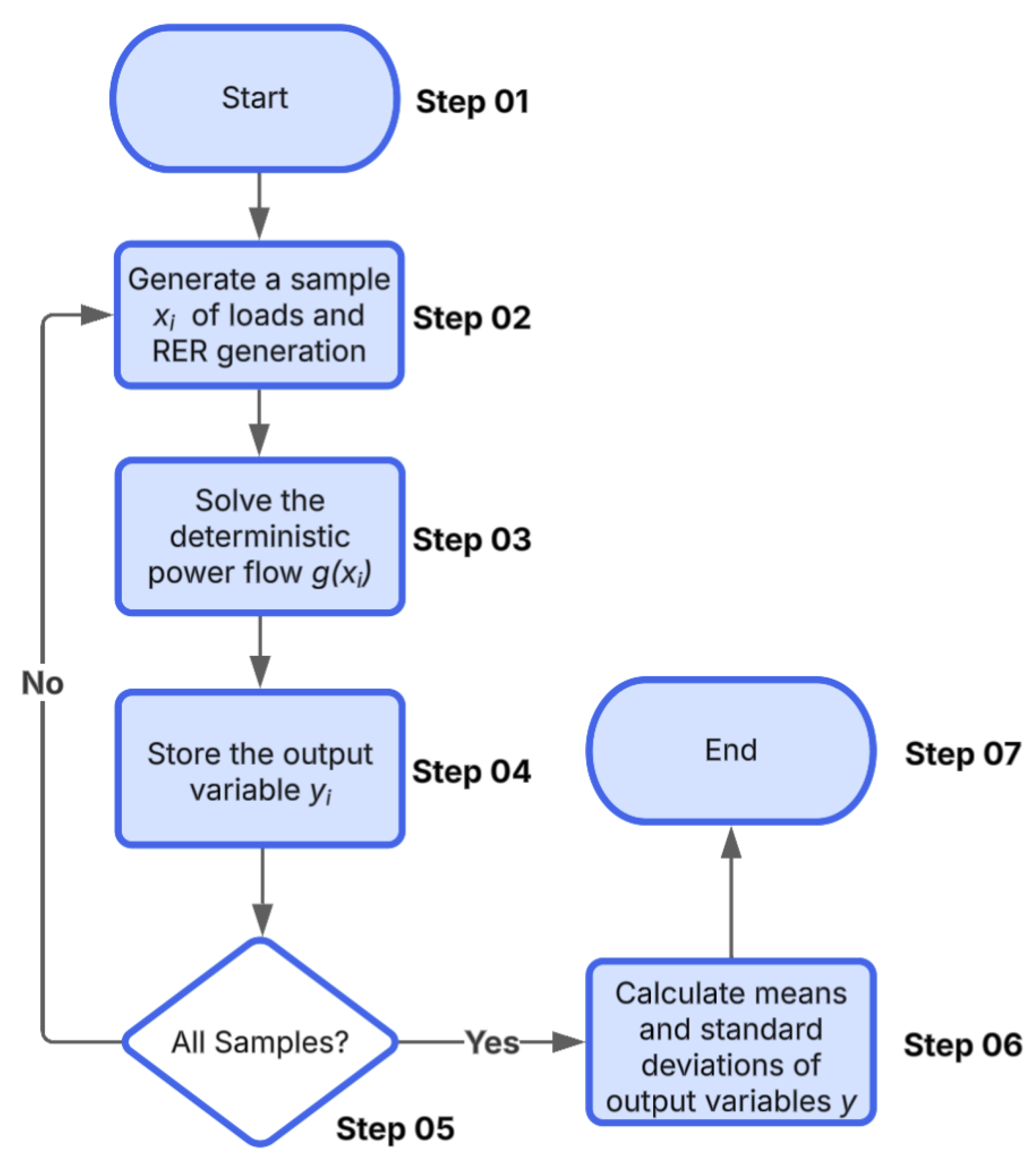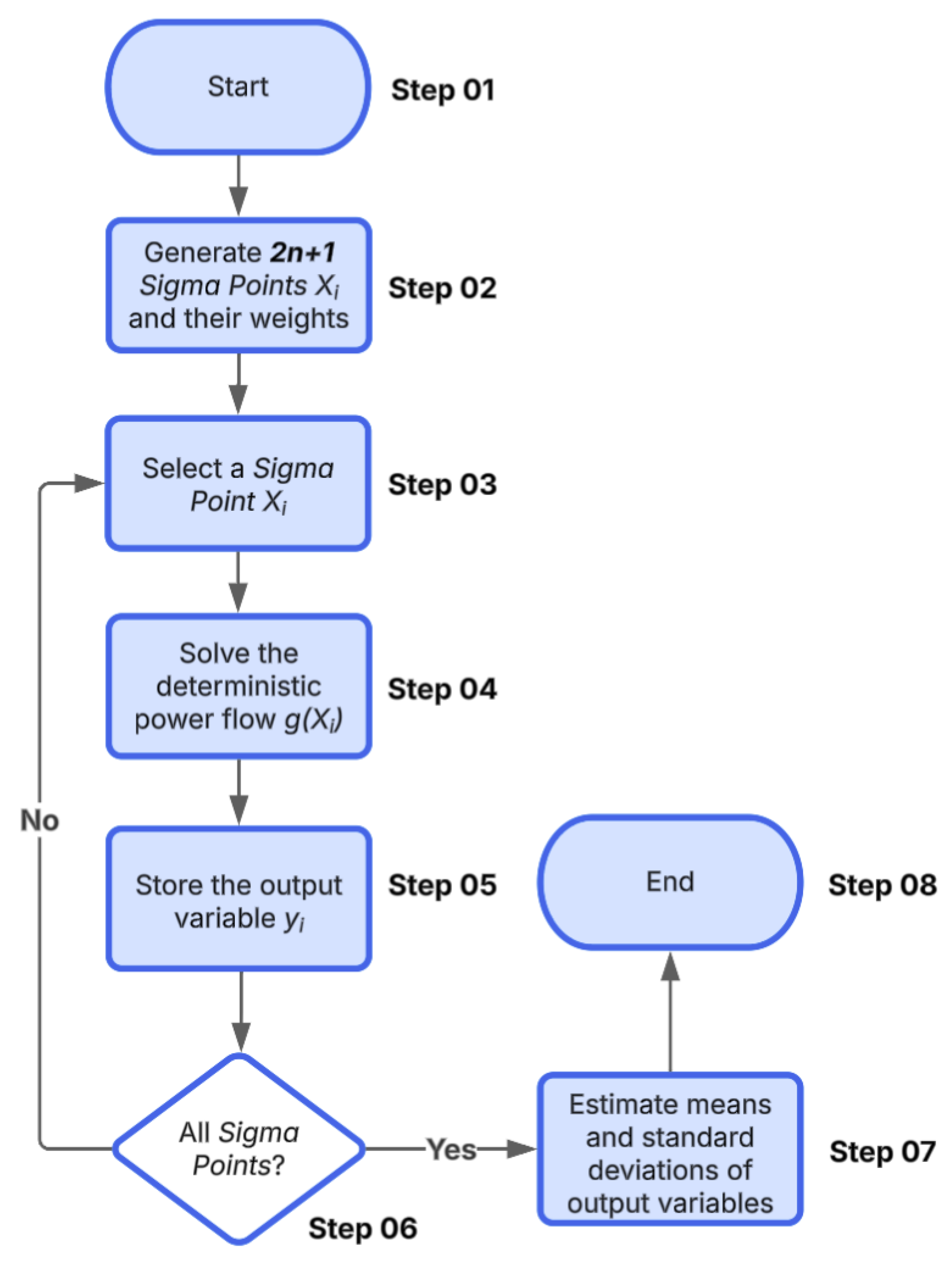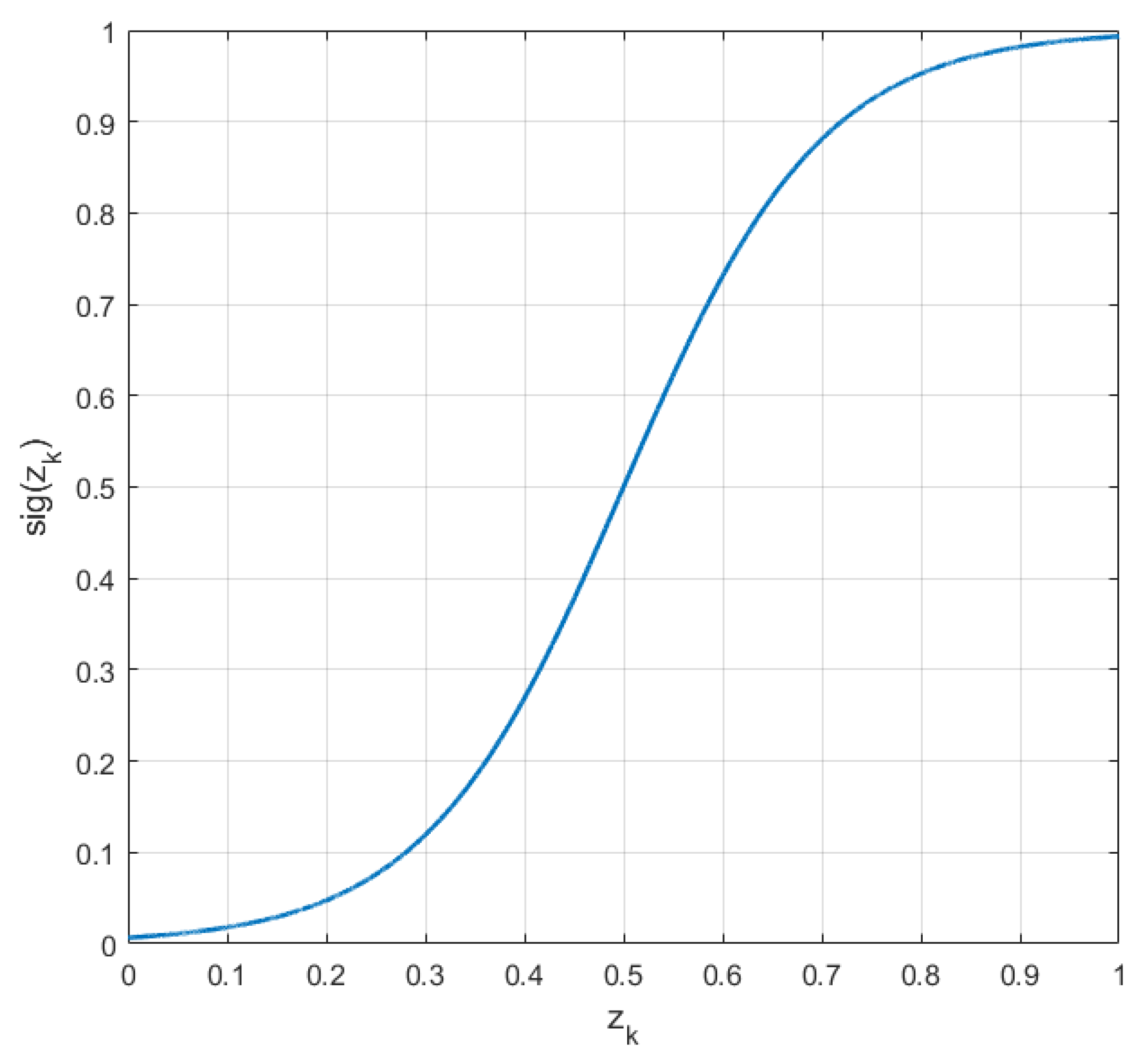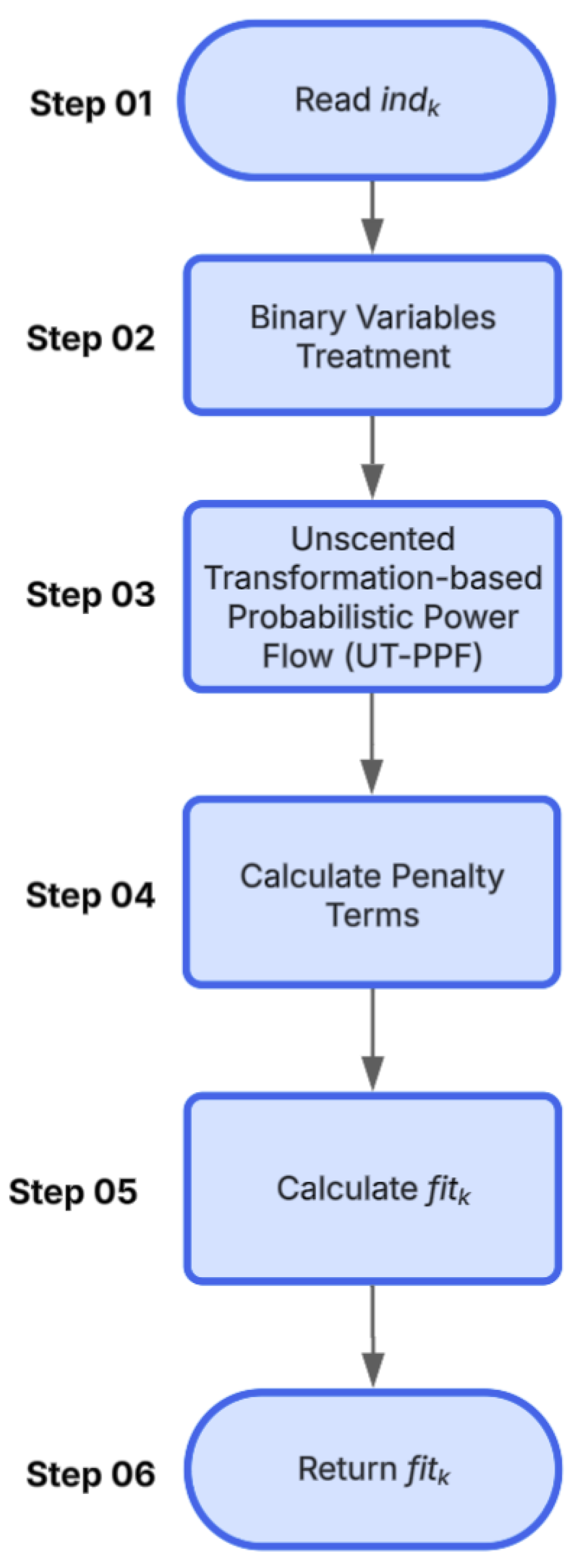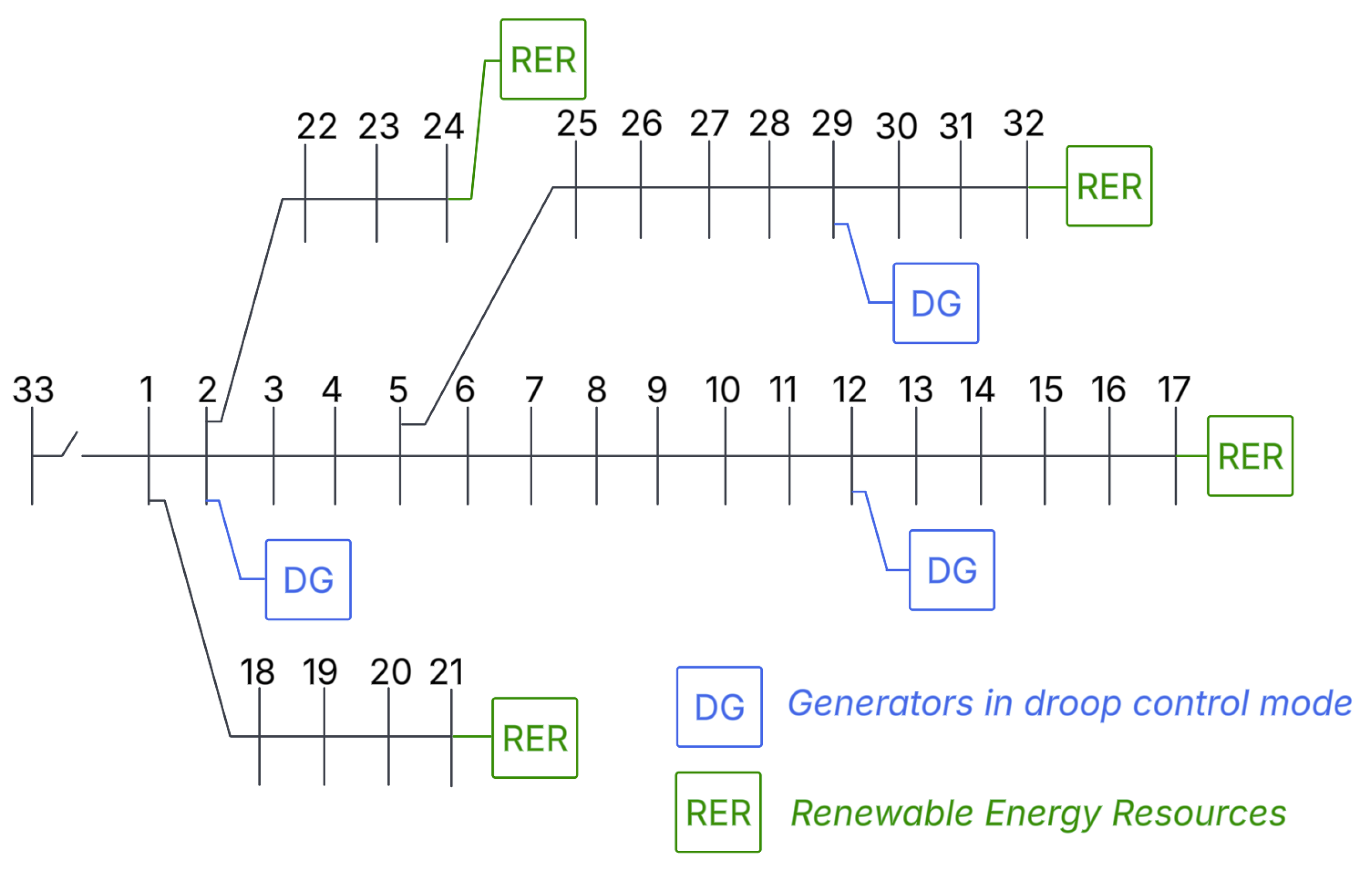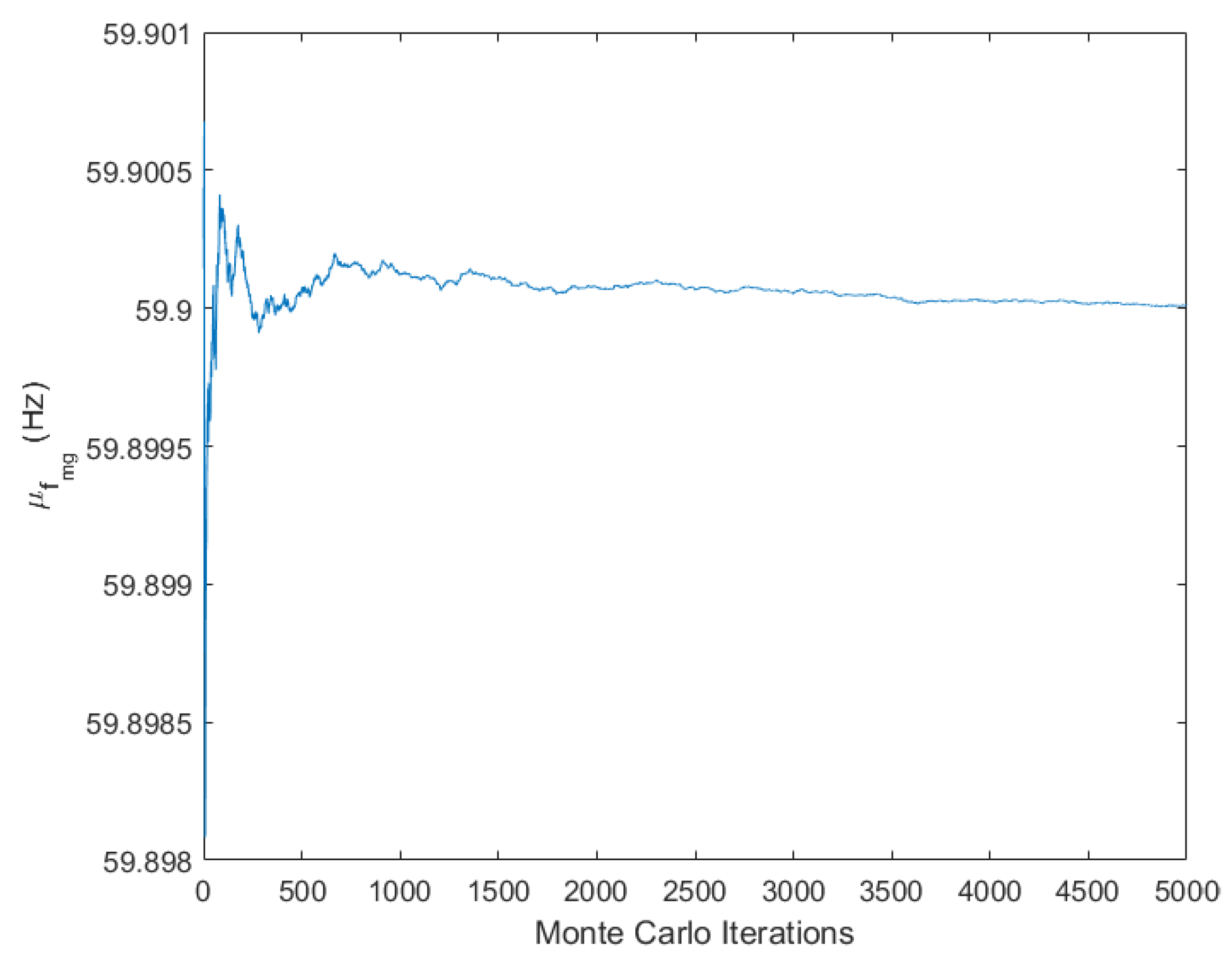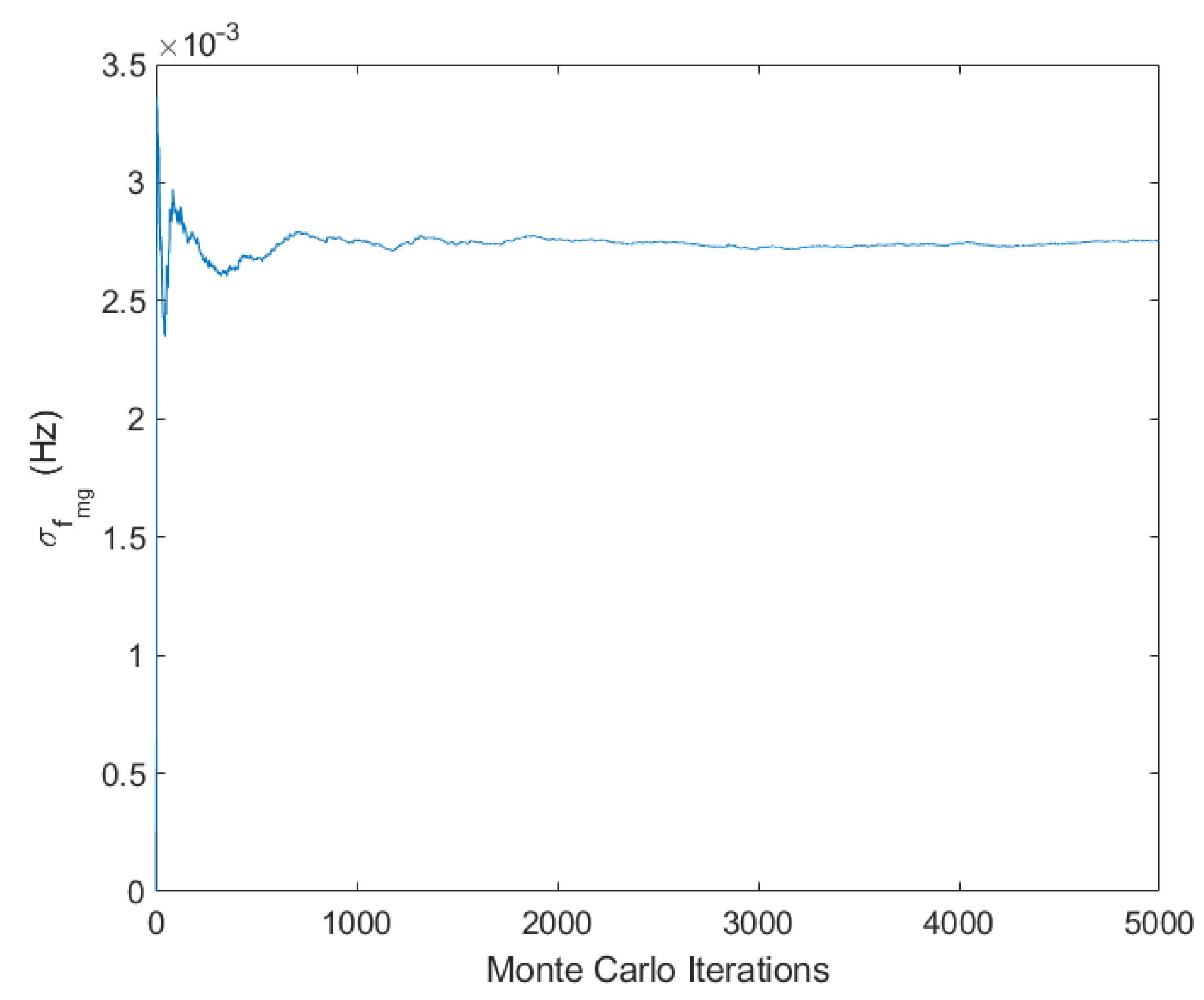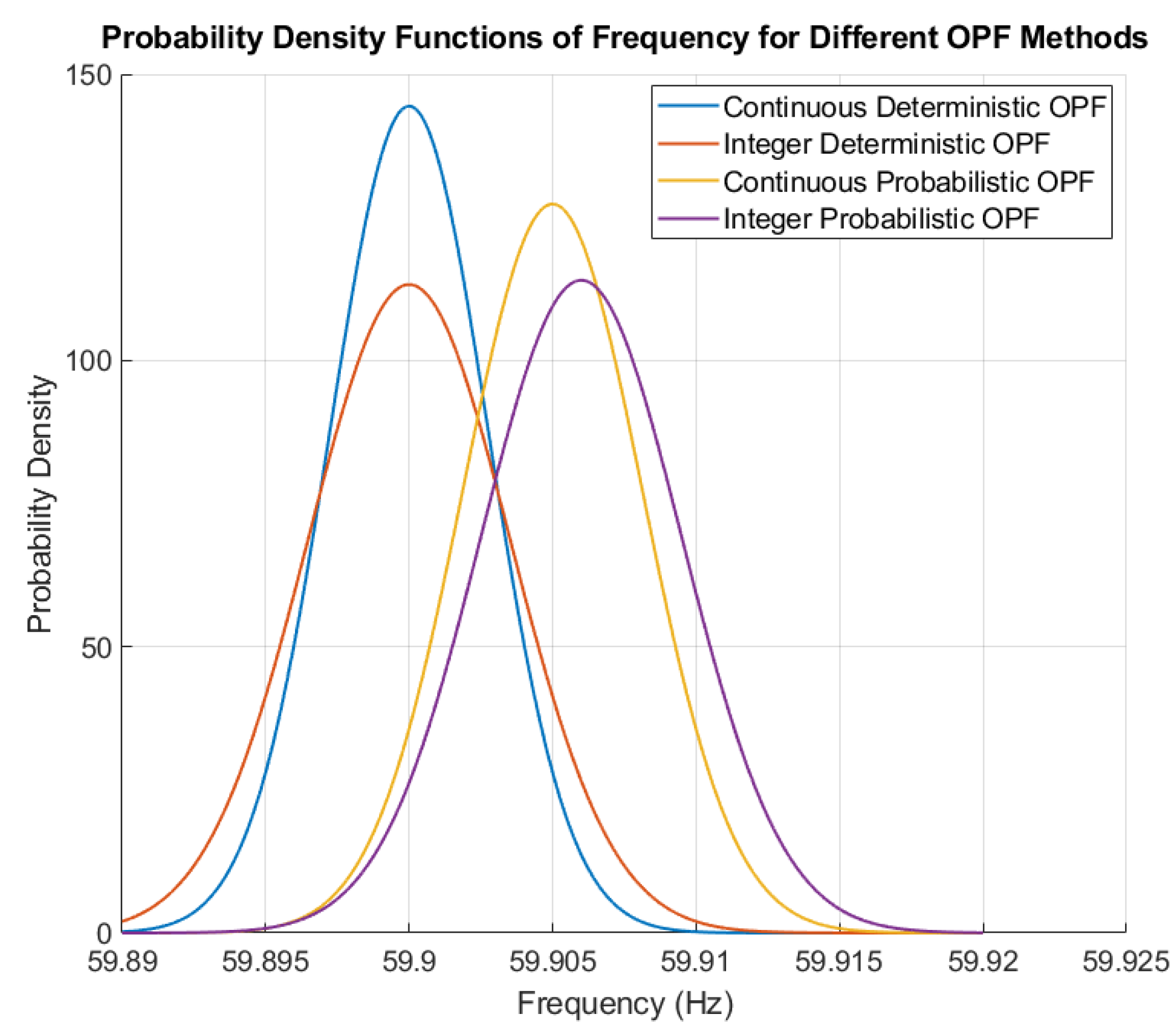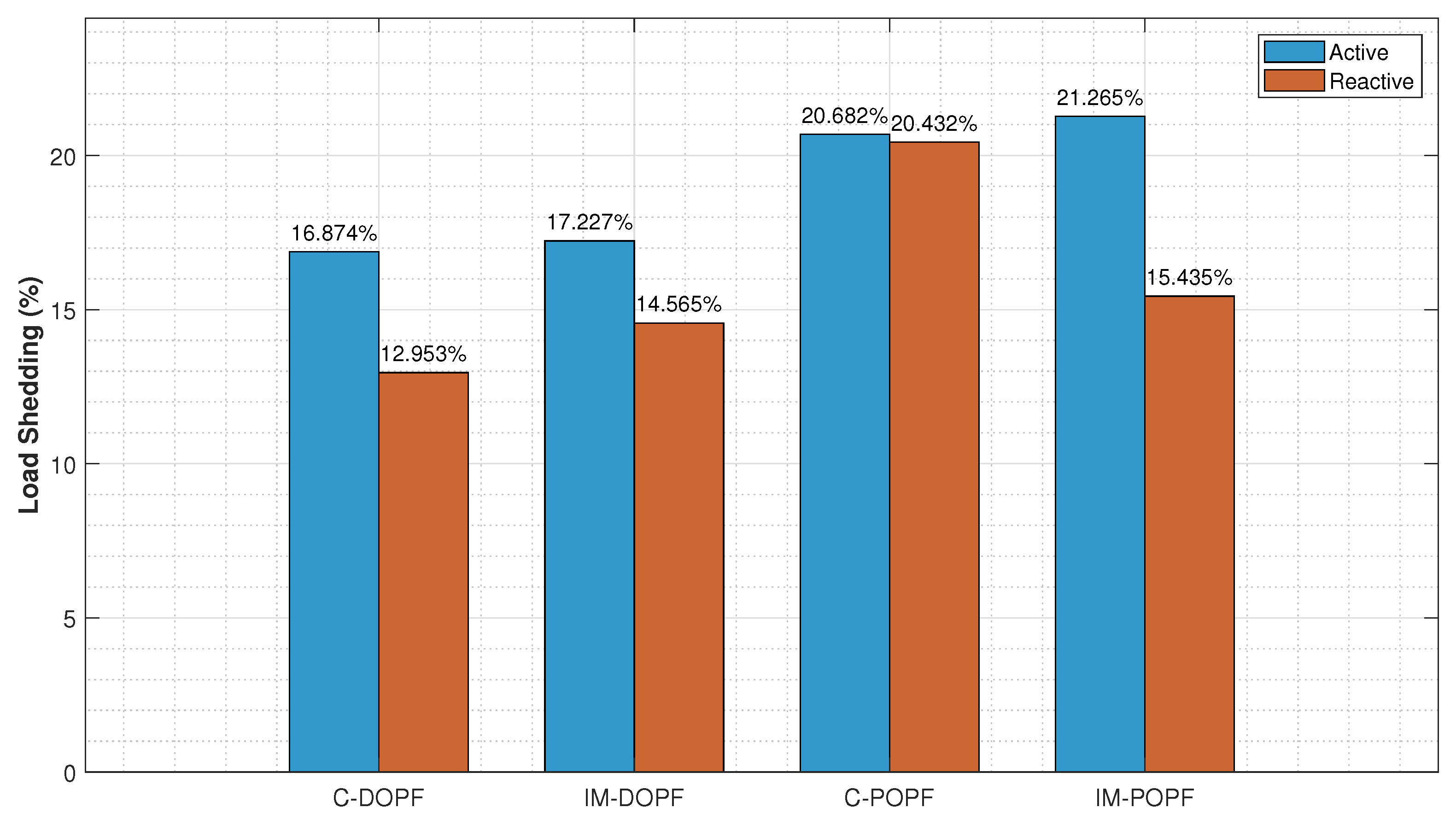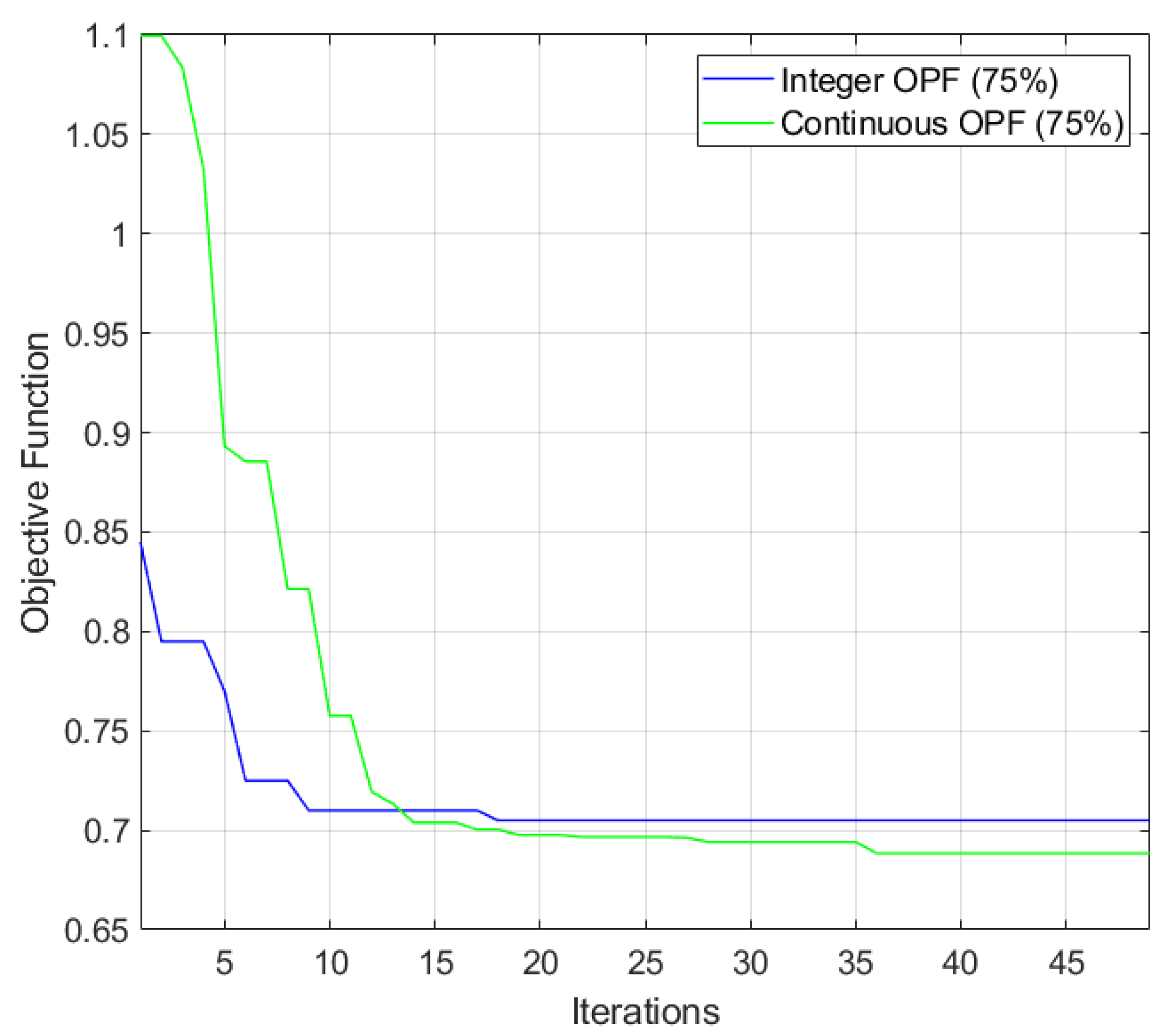1.1. Background and Context
Microgrids (MGs) represent a promising solution for integrating distributed energy resources and enhancing power system resilience, particularly in remote areas where connection to the main grid is challenging or uneconomical. When operating in islanded mode, these systems face significant challenges in maintaining frequency stability due to the absence of support from the main grid.
Unlike conventional power systems with large synchronous generators that provide natural inertia, microgrids often rely on power electronic interfaces that lack this stabilizing characteristic, making frequency control more challenging compared to traditional systems without distributed energy resources [
1]. In addition, the limited power reserve and generation capacity in MGs make them more vulnerable to load and generation imbalances compared to grid-connected operations.
Frequency regulation in islanded microgrids is critical as even small imbalances between generation and load can lead to significant frequency deviations, potentially triggering cascading failures and system collapse. Under-frequency load-shedding schemes are particularly important where only one grid-forming resource may be available for frequency regulation [
2].
A comprehensive review of load-shedding strategies for microgrids in islanded operation can be found in [
3], emphasizing energy management strategies to maintain the reliability of energy flow between load and supply when disconnected from the main grid.
Traditional load-shedding approaches typically involve fixed frequency thresholds and predetermined load-shedding quantities. Under-frequency load shedding has been a common approach to manage frequency stability in microgrids by detecting power deficits and shedding selected loads based on predefined priorities [
4]. However, these approaches face several limitations: (i) they often do not account for the stochastic nature of renewable generation; (ii) they may shed more or less load than necessary; (iii) they do not consider load types and priorities effectively, and (iv) they do not adapt to changing system conditions.
Multi-scenario approaches have been developed to address the probabilistic nature of renewable generation in microgrids, with [
5] proposing a genetic algorithm-based method that determines optimal load shedding for underfrequency relays considering multiple scenarios with probabilities defined from historical meteorological data and Markov models, demonstrating effectiveness in microgrids with gas turbines, wind generators, and solar photovoltaic systems.
Recent research has shifted toward more sophisticated and adaptive approaches. Adaptive load-shedding schemes have been developed to regulate grid frequency by measuring system parameters like voltage and frequency signals and implementing stepwise load shedding at locations experiencing the highest voltage drop and frequency variation [
6]. These approaches adjust the load-shedding step based on factors such as shedding speed, location, value, and rate of frequency change.
Intelligent control strategies have emerged as promising solutions for improving load-shedding performance, with [
7] developing an online-trained Petri probabilistic wavelet fuzzy neural network controller to replace traditional proportional–integral controllers in battery energy storage systems, achieving fast load shedding and improved power sharing in islanded microgrids with droop control.
Two-stage under-frequency load-shedding strategies have been proposed, dividing the process into a fast load-shedding stage and a risk avoidance stage. The first stage addresses rapid frequency decreases, while the second stage accounts for risk loss caused by load uncertainty [
8]. These approaches demonstrate improved performance by considering both immediate stability needs and longer-term risk mitigation. Additionally, ref. [
9] introduced an innovative load-shedding model for island microgrids that combines the improved Analytic Hierarchy Process (AHP) algorithm for load ranking with the Power Stability Index (PSI) to minimize customer impact while ensuring frequency returns to acceptable ranges and maintaining voltage quality and stability.
Coordinated load-shedding strategies have been proposed to address both voltage and frequency stability simultaneously, with [
10] presenting a four-dimensional voltage–frequency load-shedding strategy that uses piecewise linear curves to determine proper load-shedding locations and amounts, achieving more than 20% optimization in load rejection compared to conventional methods.
On the other hand, ref. [
11] addresses frequency stability through a coordinated operation strategy focusing on rapid energy storage power adjustment and hierarchical under-frequency load shedding. The approach categorizes energy storage systems based on support time characteristics and implements control strategies that integrate energy storage power allocation with load-shedding decisions.
Optimization-based approaches have gained significant attention. Optimization models have been developed for secondary control of islanded microgrids, considering the action of primary control and references from tertiary control, solved using linear approximations of frequency-dependent power flow equations [
12]. These models aim to restore frequency and voltages to nominal values while respecting the capacity limits of renewable sources and energy storage devices.
In ref. [
13], a dynamic load-shedding strategy for islanded microgrids with limited generation resources was developed, formulating the problem as a stochastic optimization based on the Markov decision process to maximize economic performance while managing uncertainties from intermittent energy sources and load variations.
Computing approaches, such as genetic algorithms and artificial neural networks, have been used to control microgrid frequency by automatically adjusting and optimizing controller coefficients [
14]. These approaches can handle the nonlinearities and complexities of microgrid systems better than conventional controllers. Conversely, ref. [
15] uses Knowledge-Aggregation-based Proximal Policy Optimization to balance exploration and exploitation in frequency control strategies, incorporating active power symmetry and equilibrium considerations. This work shows how reinforcement learning approaches can enhance frequency regulation performance under renewable energy uncertainties. Furthermore, recent advances in deep reinforcement learning have shown promising results for adaptive frequency control of islanded microgrids, with [
16] proposing a Learning-Driven Load Frequency Control (LD-LFC) method using graph-network-based deep reinforcement learning to address the complex and nonlinear control challenges introduced by high renewable energy penetration and random load disturbances.
Novel approaches to address low inertia include virtual inertia emulation and demand response. Virtual synchronous generators created through appropriate control mechanisms can provide virtual inertia to improve system stability, while plug-in electric vehicles can be used for power charging/discharging to support frequency regulation [
17]. These approaches increase the natural inertia in MGs.
Although advances have been made in frequency regulation for islanded microgrids, current approaches face limitations that compromise their effectiveness under real-world conditions. Most existing load-shedding strategies use either continuous frameworks that fail to reflect the integer nature of actual load disconnections or rely on deterministic models that inadequately capture the stochastic behavior of renewable generation and load variations. The lack of integrated frameworks that combine integer load-shedding decisions with uncertainty propagation through probabilistic methods represents a gap in the current literature.
In this context, this paper addresses these limitations by proposing a novel integer-mixed probabilistic optimal power flow (IM-POPF) framework that integrates discrete load-shedding decisions with uncertainty modeling. Existing approaches fall into three categories: continuous probabilistic methods that allow unrealistic partial load disconnections, deterministic integer methods that ignore uncertainty, and deterministic continuous methods that suffer from both limitations. Unlike these approaches, the proposed IM-POPF method categorizes variables as integer (load shedding at specific nodes) and continuous (voltages, power generation, and frequency), accurately reflecting real-world power system operations where loads can only be completely disconnected or maintained, not partially adjusted.
The key innovation lies in the first-time integration of discrete load-shedding optimization with efficient probabilistic uncertainty propagation, combining Differential Evolution (DE) metaheuristics with the Unscented Transformation (UT) technique. This approach enables uncertainty propagation without the computational burden associated with Monte Carlo simulations (MCSs), requiring only 137 samples versus 5000 for MCSs while maintaining equivalent accuracy. The practical relevance of the integer formulation is crucial, as actual microgrid switching devices can only perform complete load disconnections, making continuous optimization solutions impractical for direct implementation. Validation on an IEEE 33-bus microgrid system demonstrates that this integrated approach achieves 95.28% confidence level compliance compared to 50% for deterministic methods, while requiring only 0.58% additional load shedding compared to continuous formulations, confirming the practical superiority of the IM-POPF framework in minimizing total load shedding while maintaining frequency stability under uncertain conditions.

